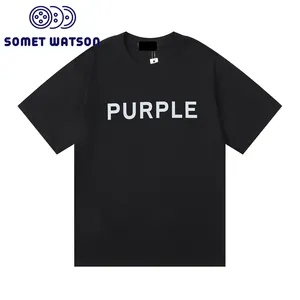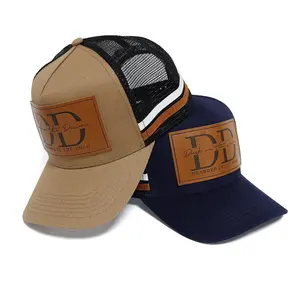Phổ biến trong ngành của bạn

L72 Hot Bán Peru Mực Phi Lê Đông Lạnh Mực Thịt Không Da Mực Phi Lê
1.200,00 US$ - 1.300,00 US$
Đơn hàng tối thiểu: 15 Tấn hệ mét


Aicn Hoàn toàn tự động điện cá làm sạch quy mô xương và da loại bỏ Dòng Máy chế biến
3.900,00 US$ - 20.000,00 US$
Đơn hàng tối thiểu: 1 Bộ


Phi Lê Mực Khổng Lồ X325 Phi Lê Luộc Thịt Mực Khổng Lồ Đông Lạnh Peru
800,00 US$ - 1.200,00 US$
Đơn hàng tối thiểu: 18 Tấn hệ mét


Aicn tự động SARDiNE cá da trơn Cá xương loại bỏ cắt làm sạch máy chế biến
8.000,00 US$ - 50.000,00 US$
Đơn hàng tối thiểu: 1 Bộ


Xương tro để làm cho bộ đồ ăn orpet xương tro người mua Trung Quốc với giá tốt nhất
0,70 US$
Đơn hàng tối thiểu: 1 Kilogram
Vận chuyển mỗi chiếc: 189,00 US$



Xương Mực Khô Với Nhiều Kích Cỡ Từ Việt Nam/Ms.Thi Nguyen + 84 988 872 713
4,00 US$ - 5,00 US$
Đơn hàng tối thiểu: 500 Kilogram


Hot Bán Chim Chew Đồ Chơi Con Vẹt Nguồn Cung Cấp Treo Nghiền nát Mực Xương Canxi Bổ Sung Vẹt Từ Việt Nam Chất Lượng Cao
0,10 US$ - 0,20 US$
Đơn hàng tối thiểu: 10000 Cái

Chất Lượng Cao Mực Bone-Mực/100% Tự Nhiên Mực Xương Từ Việt Nam
1,00 US$ - 3,00 US$
Đơn hàng tối thiểu: 100 Kilogram


100% Mực Xương Chất Lượng Cao Không Có Tạp Chất Thành Phần Để Làm Thuốc Tốt Cho Sức Khỏe Sản Xuất Tại Việt Nam
3,00 US$ - 4,00 US$
Đơn hàng tối thiểu: 1000 Kilogram
Các tìm kiếm liên quan:
may mắn gris femmeslederhosen thanh lịch bavarianđầu kurti màu vàngngười đẹp ả rập gợi cảmkurti ren không taymặc màu đỏ cho ngày phụ nữ 2017cây trồng ren trắng úcmàu đen trang trọng blouse/topsphụ nữ bavarian lederhosendiablismthiết kế kurtas dài mới nhấtthiết kế của kurtis với renkoushi haikyuunhà nhập khẩu ở delhi ấn độcắt xương mực nang kích thước lớn

Chất Lượng Cao Khô Mực Xương Mực 100% Tự Nhiên Mực Xương Từ Việt Nam
5,00 US$ - 9,00 US$
Đơn hàng tối thiểu: 200 Cái


Tốt Nhất Nhà Sản Xuất Khô Mực Xương Chất Lượng Cao Việt Nam Hộp Phong Cách Tươi Đông Lạnh Mực
240,00 US$
Đơn hàng tối thiểu: 100 Tấn

Xương Mực Khô Chất Lượng Cao 100% Xương Cá Mực Tự Nhiên Từ Việt Nam Xương Mực Canxi Chim Tự Nhiên Cho Vẹt
100,00 US$ - 120,00 US$
Đơn hàng tối thiểu: 5 Tấn

Nam Hàn Quốc Khô mực khô mực không da với 2 năm Thời hạn sử dụng ngon hải sản đồ ăn nhẹ Khô mực cho xuất khẩu

22,51 US$ - 34,01 US$
Đơn hàng tối thiểu: 1000 Kilogram

Bạch tuộc mực Nhật Bản mực Jig sáng bằng gỗ Egi tôm mực Móc Câu Cá Ếch thu hút

3,00 US$ - 5,00 US$
Đơn hàng tối thiểu: 25 Tấn hệ mét

Hot Bán Đặc Biệt Khô Mực (8-130 cái/kg) Từ Việt Nam | Khô Mực | Giá Rẻ Giá | Mực
120,00 US$ - 220,00 US$
Đơn hàng tối thiểu: 10 Tấn

Số lượng lớn kích thước 5-30 cm mực xương tẩy trắng hoặc không giá cả cạnh tranh từ Việt Nam sẵn sàng để tàu
1.385,00 US$ - 1.785,00 US$
Đơn hàng tối thiểu: 11 Tấn

Bán Sỉ Bột Xương Mực Giá Rẻ/Số Lượng Lớn Cho Thức Ăn Cho Động Vật/Xương Mực Sinh Thái Hữu Cơ Chất Lượng Cao Tại Việt Nam
0,50 US$ - 4,00 US$
Đơn hàng tối thiểu: 1000 Kilogram


Xương Mực Nang Chất Lượng Cao 100% Xương Mực Nang Tự Nhiên Từ Việt Nam
1,20 US$ - 3,60 US$
Đơn hàng tối thiểu: 500 Kilogram

Xương Mực Khô (Cỡ: 4 - 9 Cm) Xuất Xứ Việt Nam//Hổ Phách + 84383004939
0,40 US$ - 0,45 US$
Đơn hàng tối thiểu: 15000 Kilogram

Nhà Sản Xuất Xương Mực Và Xương Mực Khô Để Làm Chitosan Tại Việt Nam
1.300,00 US$
Đơn hàng tối thiểu: 7 Tấn hệ mét

Bán buôn 100% mặt trời khô mực xương cho chim thực phẩm và thức ăn chăn nuôi/khô nâu đỏ xương Sản xuất tại Việt Nam
0,30 US$ - 0,60 US$
Đơn hàng tối thiểu: 10000 Cái

Bán Buôn Nhỏ Mực Xương Động Vật Thức Ăn Tự Nhiên Trắng Khô Mực Xương Từ Manfactory 99 Vàng Dữ Liệu Việt Nam
5,00 US$ - 9,00 US$
Đơn hàng tối thiểu: 200 Cái

Xương Mực Từ Nhà Máy Việt Nam Giá Cả Cạnh Tranh Mực Khô Xương Mực Tươi Thức Ăn Cho Vẹt Vật Nuôi
0,80 US$ - 1,50 US$
Đơn hàng tối thiểu: 1000 Kilogram

Bạch tuộc mực Nhật Bản mực Jig sáng bằng gỗ Egi tôm mực Móc Câu Cá Ếch thu hút
3,00 US$ - 5,00 US$
Đơn hàng tối thiểu: 25 Tấn hệ mét

Mực nang Xương-cao dinh dưỡng cho động vật từ Việt Nam với chất lượng cao và giá cả cạnh tranh
1.150,00 US$ - 1.750,00 US$
Đơn hàng tối thiểu: 10 Tấn

Nguyên Tẩy Trắng Cắt Khô Mực Xương 100% Mực Xương Cá Xương Nâu Đỏ Vỉ Carton Tại Việt Nam
12,00 US$
Đơn hàng tối thiểu: 200 Kilogram

Giá cả cạnh tranh mực xương/100% tinh khiết mực xương từ Việt Nam
5,00 US$ - 8,00 US$
Đơn hàng tối thiểu: 100 Kilogram

Tốt Nhất Thức Ăn Vật Nuôi 2024/Đặc Biệt Cho Chim I Số Lượng Lớn Mực/Khô Mực Xương Cho Vật Nuôi Và Chim Tôi 100% Tự Nhiên Thực hiện Trong Việt Nam
1,85 US$ - 2,00 US$
Đơn hàng tối thiểu: 100 Kilogram

Giá Rẻ Giá Khô Mực Xương/Chất Lượng Cao Hải Sản Việt Nam/Pha Lê
5,00 US$ - 15,00 US$
Đơn hàng tối thiểu: 10 Kilogram

Việt Nam Chất Lượng Cao Có Hương Vị Cam Mực Mực Mực Xương Cho Kích Thước Chim 4 Inch Sẵn Sàng Để Xuất Khẩu
6,00 US$ - 9,00 US$
Đơn hàng tối thiểu: 1000 Kilogram

Thỏa thuận nóng mực xương mực bone100 % tự nhiên mực xương Vẹt thức ăn vật nuôi xử lý OEM/ODM tại Việt Nam
0,90 US$ - 3,80 US$
Đơn hàng tối thiểu: 100 Kilogram

Cá Mực Đông Lạnh Làm Sạch Toàn Bộ Cá Mực Xuất Khẩu Hải Sản Ấn Độ Cá Mực Đông Lạnh Bán Sepiida Seiches
100,00 US$ - 150,00 US$
Đơn hàng tối thiểu: 5 Tấn

Chất Liệu Xương Mực Chất Lượng Quốc Tế Xương Mực Khô
0,80 US$ - 1,50 US$
Đơn hàng tối thiểu: 1000 Kilogram

Cung cấp Thức ăn cho chim từ Việt Nam/Mực Nang xương/giá rẻ (WhatsApp + 84 901 022 641)
1.100,00 US$ - 1.200,00 US$
Đơn hàng tối thiểu: 10 Tấn
Các danh mục hàng đầu
Giới thiệu về xương mực việt nam
Alibaba.com cung cấp các sản phẩm 3738 xương mực việt nam. Có rất nhiều xương mực việt nam lựa chọn dành cho bạn, chẳng hạn như chim, động vật, và gà. Bạn cũng có thể chọn từ xương, toàn bộ, và cơ thể xương mực việt nam. Cũng như từ khô, khô xương mực việt nam.Và bất kể xương mực việt nam là thả, dinh dưỡng, hay hữu cơ.

















